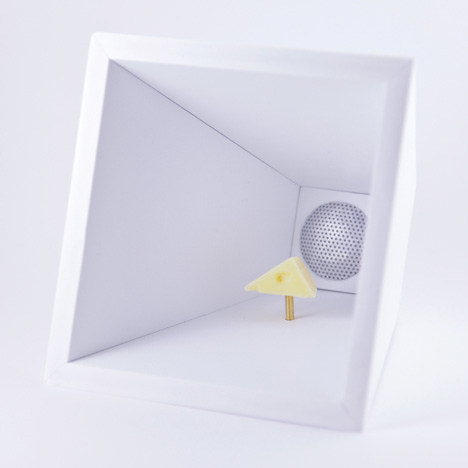German designer Johanna Schmeer has created a set of traps for catching genetically modified mice.
The first of the three traps is a spiralling tube, designed to capture mice with an inner ear abnormality that affects their sense of balance and causes them to run around in circles (above).
A mouse with a mutation that causes it to sing like a bird should be attracted to the second trap, which is a speaker that plays birdsong (top), while the third trap is a magnet that will confuse mice with brain implants and temporarily paralyse them (above).
We've previously featured a set of non-lethal mousetraps for catching regular mice.
See more stories about animal-related design »
Here's some explanation from Schmeer:
The project "Mousetraps No.3, 14 and 18" aims at creating a reflection and discussion about the altering and design of life forms, by speculating into a future where these new life forms become commonplace, and a part of our natural environment.
The traps are designed for three different genetically and technologically modified rodents, which exist in research laboratories today.
The "waltzing mouse", the only one of the three that already exists in nature, has a genetic abnormality which, because of a defect of the inner ear, causes the mouse to run in circles due to problems with its balance. The trap captures the mouse in a circular pipe which is closed at the top – due to the genetic defect the mouse will not be able to escape by walking backwards or turning around.
The "cyborg mouse" is a mouse like the many rodents that have been used in laboratories to test brain implants. The trap captures the mouse by attracting it to a strong magnet, which switches off its movement controlling brain implant.
The third trap is shaped like a speaker and plays birdsongs to attract the "birdsong mouse", a mouse that sings like a bird, which has been created by Japanese researchers.

